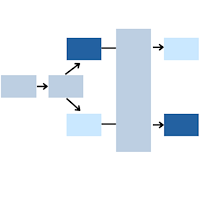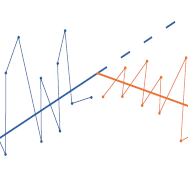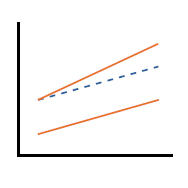Previous Posts
Interrupted time series analysis is a useful and specialized tool for understanding the impact of a change in circumstances on a long-term trend. The data for interrupted time series is a specific type of longitudinal data and must meet two criteria.
It’s easy to develop bad habits in data analysis. It's very complicated and you're under pressure to do a lot quickly. But shortcuts in the moment inevitably lead to problems later on. Avoid these bad habits and your future self will thank you.
Multicollinearity is simply redundancy in the information contained in predictor variables. If the redundancy is moderate, it usually only affects the interpretation of regression coefficients. But if it is severe-at or near perfect redundancy, it causes the model to "blow up." (And yes, that's a technical term). But the reality is that there are only five situations where it commonly occurs. And three of them have very simple solutions.
Meta-analysis allows us to synthesize the results of separate studies. The goal is to assess the mean effect size and also heterogeneity – how much the effect size varies across studies.
One of the difficult decisions in mixed modeling is deciding which factors are fixed and which are random. And as difficult as it is, it’s also very important. Correctly specifying the fixed and random factors of the model is vital to obtain accurate analyses. Now, you may be thinking of the fixed and random effects […]
In this nearly 6-hour tutorial you will learn menu-based R libraries so you can use R without having to fuss with R code. These libraries don’t cover everything R can do, but they do quite a bit and can set you up to make running R much easier.
Updated 12/20/2021 Despite its popularity, interpreting regression coefficients of any but the simplest models is sometimes, well….difficult. So let’s interpret the coefficients in a model with two predictors: a continuous and a categorical variable. The example here is a linear regression model. But this works the same way for interpreting coefficients from any regression model […]
Odds ratios have a unique part to play in describing the effects of logistic regression models. But that doesn’t mean they’re easy to communicate to an audience who is likely to misinterpret them. So writing up your odds ratios has to be done with care.
The great majority of all regression modeling explores and tests the association between independent and dependent variables. We are not able to claim the independent variable(s) has a causal relationship with the dependent variable. There are five specific model types that allow us to test for causality. Difference in differences models are one of the […]
People use the terms odds and probability interchangeably in casual usage, but that is unfortunate. It just creates confusion because they are not equivalent. They measure the same thing on different scales. Imagine how confusing it would be if people used degrees Celsius and degrees Fahrenheit interchangeably. "It's going to be 35 degrees today" could really make you dress the wrong way.





 stat skill-building compass
stat skill-building compass